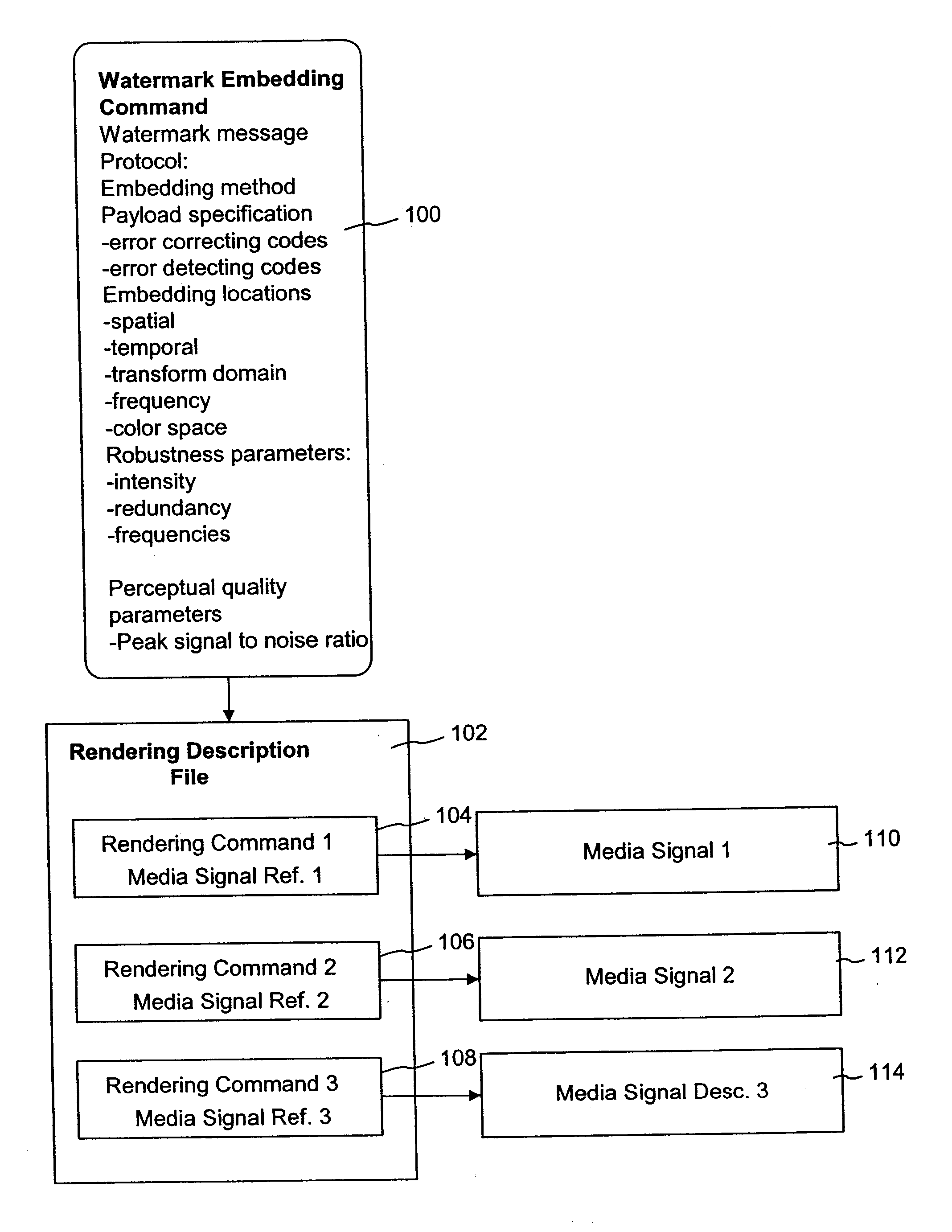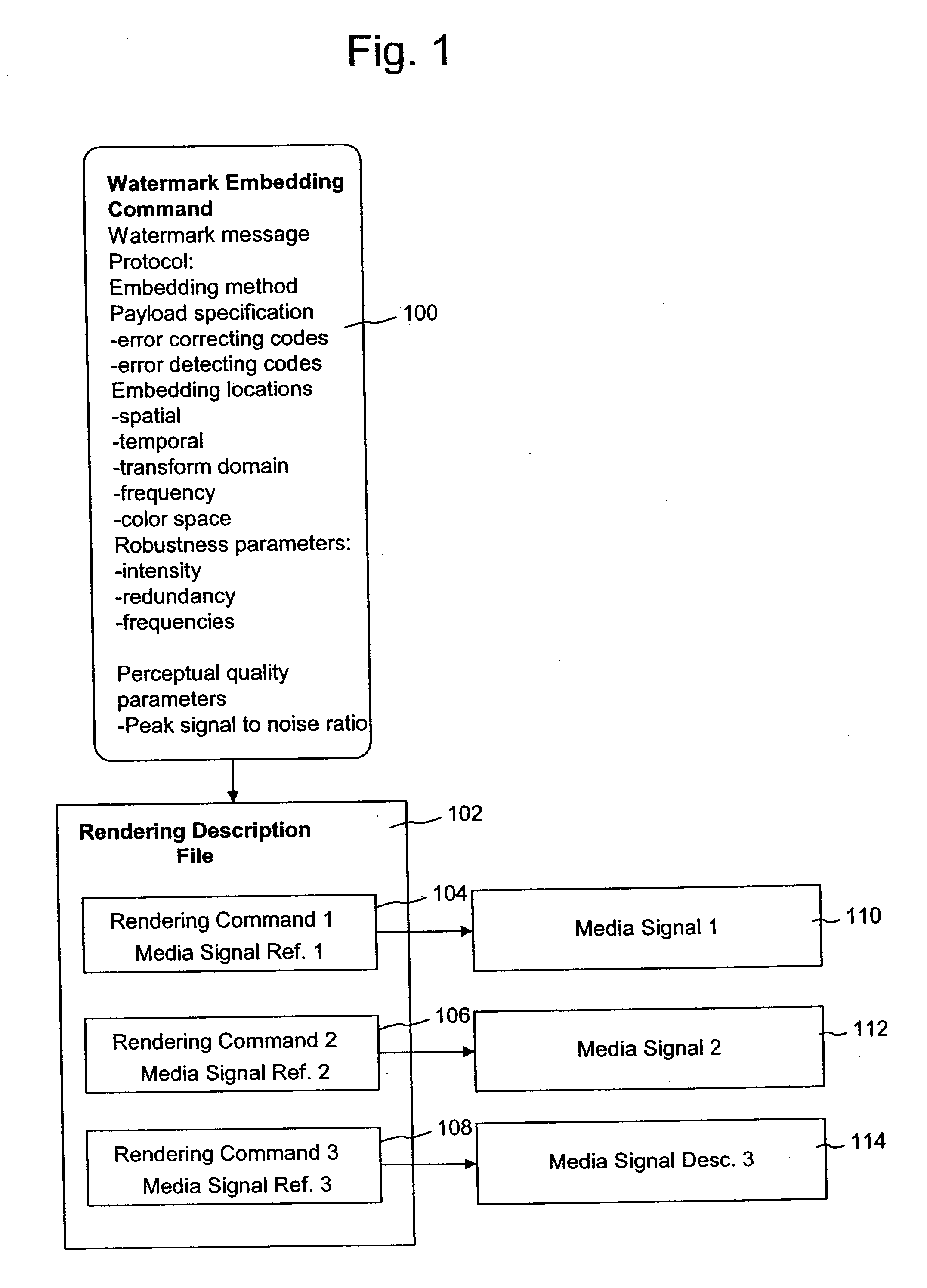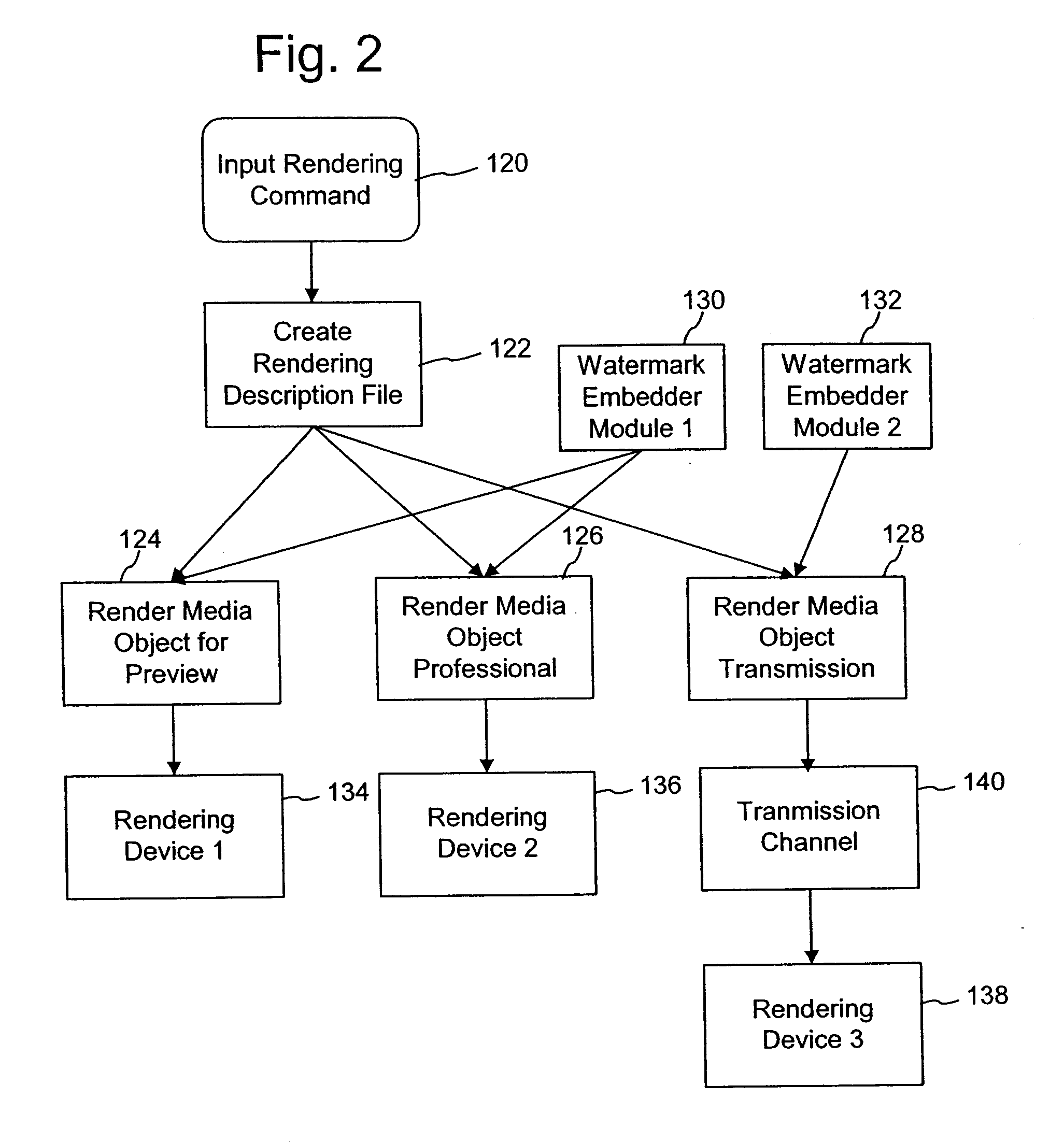Watermark embedding functions adapted for transmission channels
a transmission channel and watermark technology, applied in the field of steganography, digital watermarking and data, can solve the problems of different perceptual quality constraints, difficult to reliably detect and read watermarks, and inability to fully anticipate processing types, etc., and achieve the effect of reducing costs
- Summary
- Abstract
- Description
- Claims
- Application Information
AI Technical Summary
Benefits of technology
Problems solved by technology
Method used
Image
Examples
Embodiment Construction
[0026] Document and other media object generation tools continue to increase in sophistication and complexity. Adobe offers a variety of such tools, including their InDesign software. Watermarking can advantageously be effected in such systems.
[0027] In such environments, a document may be created using a variety of tools—most of which can insert a watermark. One program may use as input the output of one or more other programs (i.e., “compositing”).
[0028] To better handle watermarking in this environment, a watermarking function (e.g., a PostScript-like command) can be provided in the tools. This function is called with parameters specifying the desired features of the watermark information, e.g., payload, robustness level, masks to be used. At rendering time, such as for on-screen viewing, printing proofs, or ripping the final version, the watermark is actually added as digital data. In such environment, the embedder knows the properties of the rendering device, such as the prin...
PUM
 Login to View More
Login to View More Abstract
Description
Claims
Application Information
 Login to View More
Login to View More - R&D
- Intellectual Property
- Life Sciences
- Materials
- Tech Scout
- Unparalleled Data Quality
- Higher Quality Content
- 60% Fewer Hallucinations
Browse by: Latest US Patents, China's latest patents, Technical Efficacy Thesaurus, Application Domain, Technology Topic, Popular Technical Reports.
© 2025 PatSnap. All rights reserved.Legal|Privacy policy|Modern Slavery Act Transparency Statement|Sitemap|About US| Contact US: help@patsnap.com



